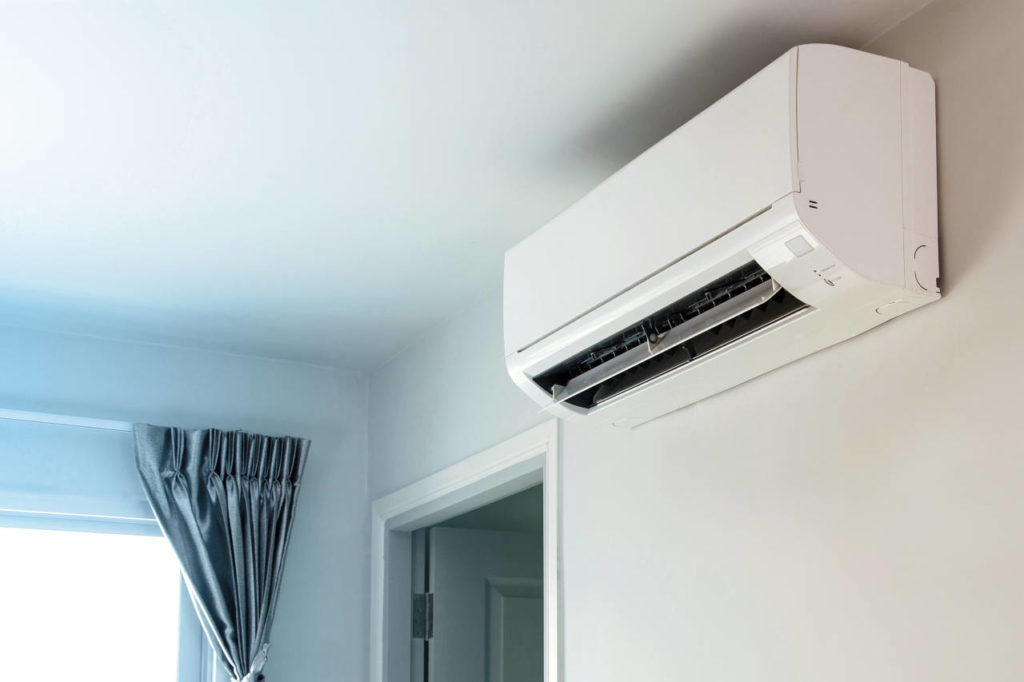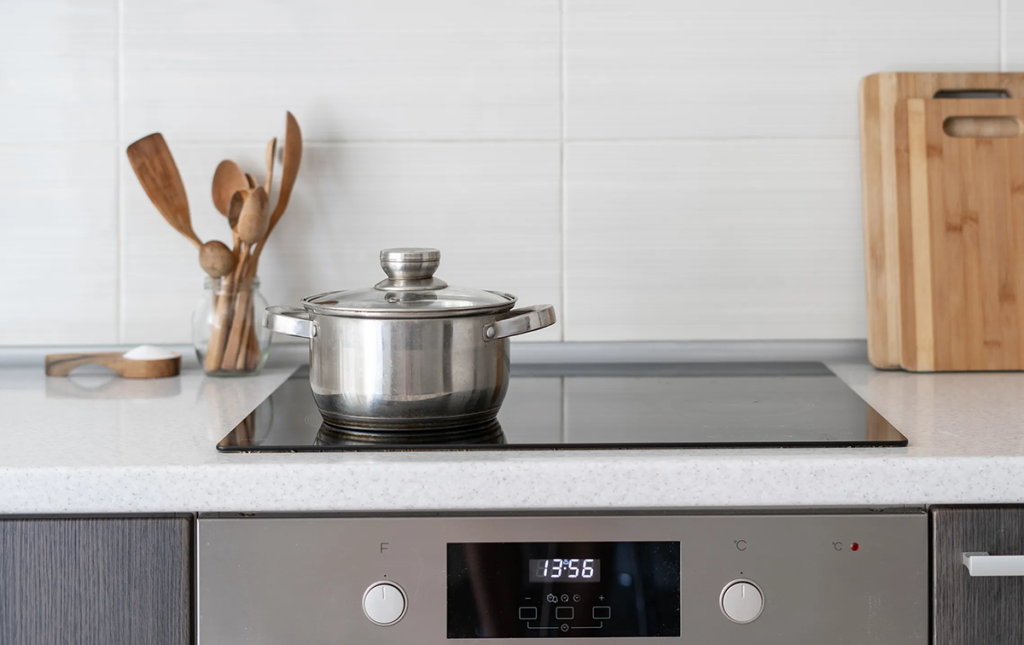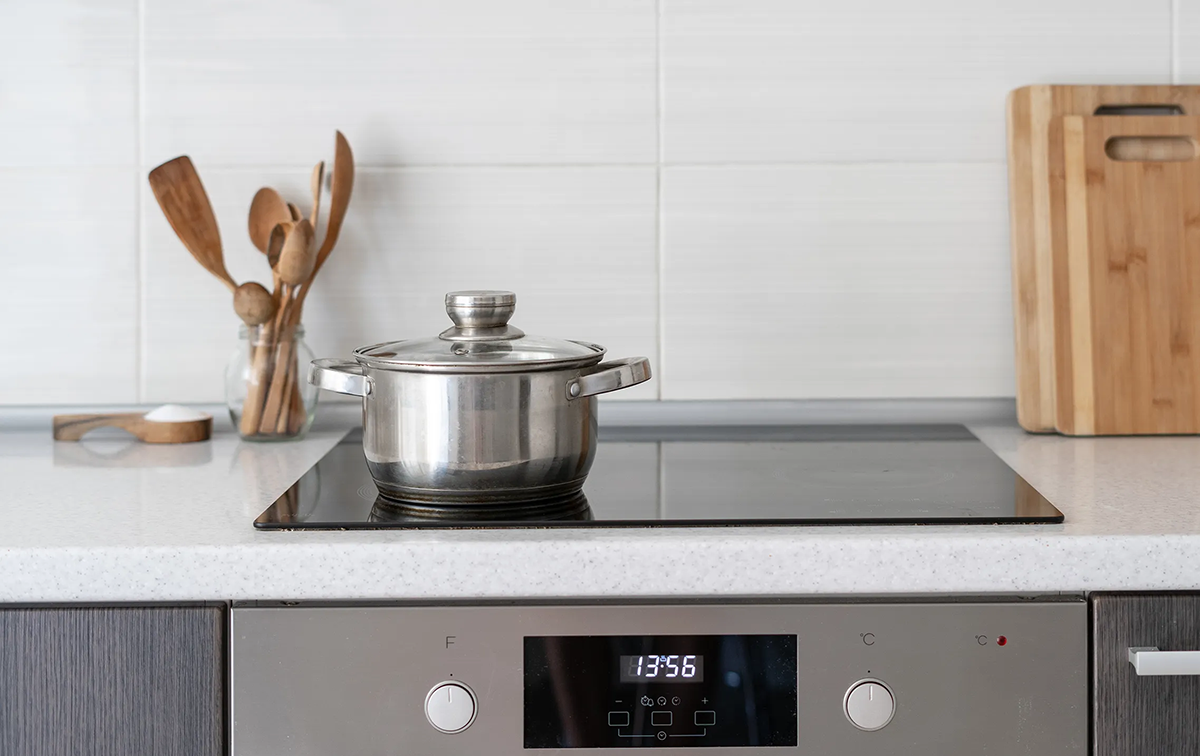Getting off gas is a great way to cut your household’s power bills while also cutting the emissions produced. With the price of gas spiking during 2022 and higher prices forecast in the years ahead, there’s never been a better time to make the switch.
Why Australia needs to wave goodbye to gas
Gas is a polluting fossil fuel. Although it has been marketed for decades as a clean power source for our homes, in reality, it produces harmful CO2 emissions. Over 5 million Australian homes are currently connected to a gas network, accounting for 17 per cent of total gas consumed in Australia and 2 per cent of our national emissions.
Those gas connections don’t come cheap, because gas appliances are less efficient and more expensive to run than modern electric equivalents. Climate Council analysis indicates households can make average savings of over $1,000 a year across Australia by switching from gas appliances to the most efficient electric alternatives.
Going all-electric isn’t just good for your wallet and the climate. It’s also good for your family’s health. Far from the “clean and natural” image that the gas industry promotes, the use of gas for heating and cooking indoors carries many health risks. Cooking with gas is estimated to be responsible for up to 12% of the burden of childhood asthma in Australia. A child living with gas cooking in the home faces a comparable risk of asthma to a child living with household cigarette smoke.
| Will you join households and businesses all around Australia in pledging to get your home off gas? Click here to make the Climate Council’s Pledge to Go Gas-Free! |
So if you’ve decided it’s time to kick the gas habit, where do you start? Read on for five steps you can take for a cheaper, cleaner and healthier home.
This isn’t a DIY job! Before you get your toolbox, always seek professional help! It isn’t just dangerous, it is illegal to conduct electrical and gas system repairs, modifications, and upgrades without an appropriate qualification.
Get efficient with heating
Heating and cooling uses the greatest amount of energy in Australian homes, accounting for around 40 per cent of total use. In cool climates like Victoria and Tasmania, gas heaters and ducted gas systems are very common for getting through the chilly winters.
But reverse cycle air conditioners based on efficient heat pump technology are significantly cheaper to run and produce fewer emissions in cold weather because they are much more efficient. That means more of the energy needed to run them is directly turned into heat instead of being lost when it is burned or distributed around your house.
Climate Council analysis indicates that on average, reverse cycle air conditioners cost about half as much to run as standing gas or ducted gas heaters.
To find the best reverse cycle heating system for your home, check out Choice’s great product guides and reviews.

(Heat) pump it up
Heating water for steamy showers and sparkling clean clothes accounts for around 25 percent of the energy used in our homes. Gas hot water systems are a common fixture in existing Australian homes because these used to be the most efficient technology available. But times have changed! Thankfully, the world has moved on, and electric heat pumps are now a cleaner and more affordable technology for water heating.
Heat pump hot water systems draw in heat from the air and collect it in a water storage tank. They are more efficient than both traditional electric and gas hot water systems, with annual running costs around 50 per cent lower than an instantaneous gas system.
To find out more about how heat pump hot water systems work and the benefits for your home, visit Renew’s online buyer’s guide.
Embrace induction cooking
It’s a myth that gas cooking is superior to induction. Replacing gas cooktops and ovens with induction appliances is another great way to save, and it won’t come at the expense of a delicious meal. For example, induction cooktops can be used with woks made from a ferromagnetic material such as stainless steel, carbon steel, or cast iron – delivering the same great flash cooking much more efficiently.
The price of induction cooktops and ovens has also come down considerably in recent years compared with when they were introduced as a new technology. Today, induction cooking appliances are available in a wide range of models and price points to suit every household. CHOICE has prepared this useful guide for comparing brands and prices.

Cut the connection
Once you’ve switched over your household heating, hot water and cooking appliances, why keep a gas connection at all? To avoid paying annual connection charges for a service you don’t need, it’s possible to disconnect your home entirely from the gas network.
The process and cost for this differ around Australia, so speak with your utility provider to get the most up-to-date information. Be warned: utilities will sometimes quote high prices or overly complicated processes to start with because it’s not in their interest to have households get off gas en masse. But stick with it – the long-term savings can be worth it!
The more that households take this final step, the more it puts Australia on track for the deep and rapid emissions cuts we need this decade to avoid harmful global warming.
Go gradually, and get help
Changing over your home appliances can come with some costs, so you don’t need to do it all at once. Gradually replacing gas appliances with electric alternatives as they reach end of life is an affordable way to transition your home over time. Every appliance you switch over will help reduce your bills and your home’s emissions!
Installing an induction cooktop will generally require upgrades to your home’s electrical wiring, however, heat pump hot water heaters and reverse cycle air conditioners may not. It’s always best to check with an electrician before you purchase new appliances.
If you do want to make a major upgrade, do your research on what government incentives may be available in your region. For example, the ACT Government currently offers interest free loans of up to $15,000 for households in the Territory to invest in cleaner appliances through the Sustainable Household Scheme. Other governments offer incentives for upgrading particular appliances, and direct grants to help with these costs for households on lower incomes.










